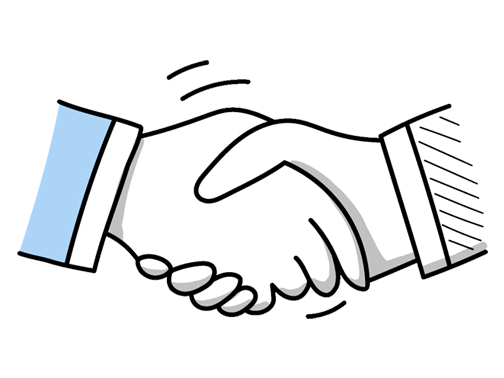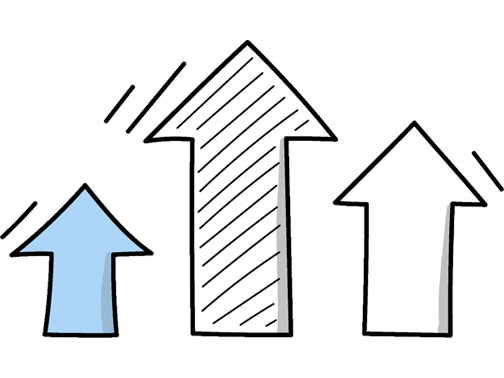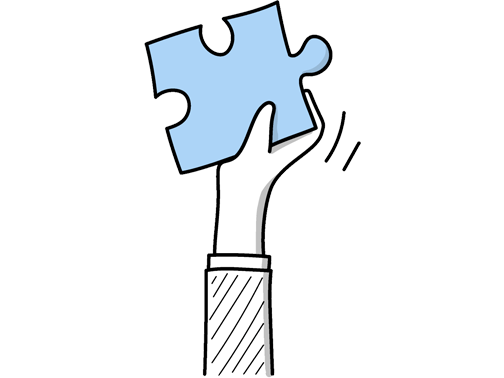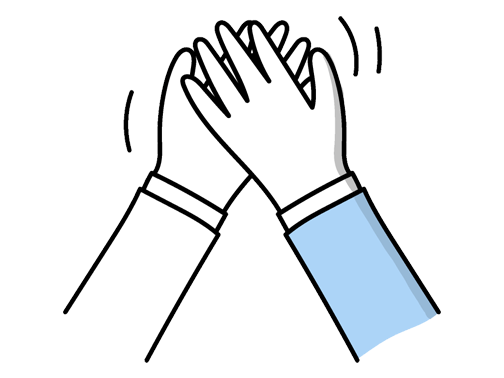Solutions Architect Interview Questions (2025 Guide)
Find out common Solutions Architect questions, how to answer, and tips for your next job interview
Practice Interviews Online - Identify your strengths and weakness in a realistic Solutions Architect mock interview, under 10 minutes
Practice Now »Solutions Architect Interview Questions
Employers ask this question to see how you respond to setbacks and your problem-solving skills under pressure. You need to explain how you analyze what went wrong, adapt your approach quickly, and keep stakeholders informed throughout the process.
Example: When a solution doesn’t work as expected, I first take a step back to understand what went wrong, digging into any technical or process gaps. I then quickly explore alternative options, testing them to find a better fit. Throughout, I keep the team and stakeholders informed, ensuring everyone’s aligned on next steps. In one project, this approach helped us pivot smoothly and deliver on time despite early setbacks.
Questions like this assess your problem-solving approach and analytical thinking. You need to explain that you systematically gather information, reproduce the issue if possible, analyze data and logs, and collaborate with stakeholders to pinpoint the underlying cause.
Example: When I encounter a problem, I start by gathering all relevant information and listening carefully to everyone involved. I break down the issue into smaller parts to understand where things might be going wrong. For example, once a deployment failed due to a misconfigured network setting; by isolating each component, we pinpointed the fault quickly. This methodical yet flexible approach helps me uncover the root cause efficiently.
This interview question assesses your leadership style and ability to guide a team toward success by ensuring alignment, motivation, and problem-solving. You need to explain how you clearly communicate goals, empower team members by leveraging their strengths, and tackle challenges together to keep the project on track.
Example: I focus on making sure everyone understands the bigger picture and their role in it, which helps create a sense of purpose. I encourage open dialogue, so team members feel confident sharing ideas or challenges. When issues arise, I work alongside them to find practical solutions, offering support rather than just direction. For example, in a past project, this approach helped us meet tight deadlines while keeping the team motivated and engaged.
What they want to understand is how you ensure clear, collaborative information flow to keep the project aligned and on track. You need to say you use regular meetings, transparent documentation, and active listening to address concerns promptly and keep everyone informed.
Example: I focus on creating open channels where everyone feels comfortable sharing ideas and concerns. Regular check-ins and using collaborative tools help keep everyone aligned. For example, in a recent project, daily stand-ups encouraged quick issue resolution and boosted team morale, making sure we met our deadlines smoothly. Clear, consistent communication is key to avoiding misunderstandings and keeping the project on track.
This interview question assesses your ability to lead a project by showcasing your planning, communication, and problem-solving skills. In your answer, clearly outline how you define project goals, engage stakeholders throughout, and proactively address risks to ensure successful delivery.
Example: When managing a project, I start by outlining clear goals and involving all key stakeholders early on to ensure alignment. I keep communication open throughout, addressing concerns promptly and adjusting plans as needed. Identifying potential challenges upfront helps me prepare solutions before they escalate. For example, in a recent project, early risk spotting allowed us to avoid delays and delivered a smoother rollout. This approach keeps projects on track and teams confident.
What they want to see is how you stay open-minded and use feedback to improve solutions and relationships. You need to say you listen carefully, evaluate the feedback objectively, and adjust your approach to ensure the best outcome for the project.
Example: I welcome feedback as a chance to learn and improve. When a client once pointed out a gap in our solution, I listened carefully, asked clarifying questions, and adapted the design. It’s important to stay open and avoid taking criticism personally—focusing instead on how it can strengthen the outcome. Collaborating with the team to address concerns ultimately builds better trust and solutions.
Employers ask this to gauge how you support growth and knowledge-sharing within your team, which is crucial for building strong, capable teams. You need to say that you tailor your mentoring to individual needs, provide clear guidance, and encourage continuous learning to help team members develop their skills effectively.
Example: I focus on understanding each team member’s strengths and areas for growth, tailoring my support accordingly. I encourage open dialogue and share real-world experiences to make lessons relatable. For example, I once guided a junior developer through architecture design by pairing on a live project, which boosted their confidence and skills. Mentoring, to me, is about fostering a collaborative environment where everyone feels valued and empowered to learn.
Interviewers ask this question to assess your interpersonal skills and ability to maintain a productive team environment. You need to explain how you identified the conflict’s root cause, the steps you took to mediate, and the positive results that followed.
Example: In one project, two team members disagreed on the best architecture approach. I listened to both sides to understand their concerns and facilitated a discussion where we weighed pros and cons together. By focusing on our shared goals rather than individual preferences, we reached a compromise that combined the strengths of both ideas. This not only resolved the tension but also strengthened collaboration moving forward.
Questions like this assess your ability to plan systems that handle growth without performance loss. You need to explain thinking about load balancing, modular components, and scalable databases while ensuring reliability and efficiency.
Example: When designing scalable architecture, I start by understanding the core requirements and expected growth. I focus on modular components and use cloud services that allow easy scaling. For example, breaking the app into microservices helps manage load efficiently. Monitoring and flexibility are key, so the system can evolve without major overhauls. This way, the app handles demand smoothly while staying maintainable.
What they want to understand is how you manage complex projects and ensure transparency and progress tracking. You need to say you use tools like Jira or Trello combined with methodologies such as Agile or Scrum to keep stakeholders informed and maintain organized workflows.
Example: I typically use tools like Jira and Confluence to keep projects on track and ensure clear communication. For reporting, I find that regular stand-ups combined with dashboards provide real-time insight for the team and stakeholders. This approach helps identify risks early and keeps everyone aligned. For example, in my last project, using these methods allowed us to deliver ahead of schedule while maintaining quality.
Employers ask this to gauge your practical knowledge and problem-solving skills with major cloud platforms, crucial for designing effective solutions. You need to clearly share your direct experience with platforms like AWS or Azure, explain how you applied cloud best practices to ensure scalability and security, and highlight specific challenges you overcame or optimizations you made.
Example: I've worked extensively with AWS and Azure, designing scalable, secure architectures tailored to client needs. For example, I optimized a multi-region AWS deployment to reduce latency and costs while ensuring high availability. I focus on leveraging managed services and automation to simplify operations and improve reliability. Navigating challenges like resource limits or compliance requirements has strengthened my approach to building robust cloud solutions.
Hiring managers ask this question to assess your ability to foresee challenges and keep projects on track. You need to explain how you identified risks early, the strategies you used to mitigate them, and the positive results your actions had on the project's success.
Example: In a previous cloud migration project, I started by gathering the team to brainstorm potential technical and timeline risks early on. We set up regular checkpoints to monitor progress and quickly address issues, such as unexpected downtime. By staying proactive, we avoided major delays and kept the client informed throughout. This approach ensured a smooth transition and ultimately boosted the client’s confidence in our delivery.
Employers ask this question to see how you manage complex projects and handle challenges proactively. You need to explain that you create detailed timelines, monitor progress closely to identify risks early, and keep clear communication with all stakeholders to ensure alignment and timely issue resolution.
Example: To keep a project on track and within budget, I focus on mapping out key milestones early and breaking work into manageable pieces. I stay alert to potential roadblocks and address them before they escalate. Regular check-ins with the team and clear updates to stakeholders help everyone stay aligned. For example, in a past project, early detection of a vendor delay allowed us to adjust timelines without additional costs.
Hiring managers ask this to see if you understand key architectural patterns and can choose the best approach based on project needs. You should explain that monolithic architectures are single, unified systems while microservices break functionality into independent services, then highlight microservices offer better scalability and agility but add complexity, and note when each is appropriate in real-world situations.
Example: Sure. A monolithic architecture is like a single, unified application where all components are tightly connected, making it simpler initially but harder to scale or update. Microservices break the app into smaller, independent services, which improves flexibility and deployment speed but adds complexity in management. For example, Netflix shifted to microservices to handle rapid growth and frequent updates efficiently, while smaller projects might still thrive with a monolithic approach.
Questions like this assess your problem-solving skills and ability to handle complex situations confidently. You need to clearly describe the problem’s complexity, explain your systematic approach to resolving it, and highlight the positive results and lessons learned.
Example: In a previous role, I faced a challenge integrating legacy systems with a new cloud platform. I started by mapping existing workflows, identifying bottlenecks, then designed a modular API solution to bridge the gap. This approach reduced downtime and improved data consistency. It reinforced how breaking down complex problems into manageable parts leads to practical, scalable solutions that deliver real business value.
This question assesses your ability to manage communication effectively, ensuring everyone stays aligned and informed. You need to explain how you establish regular updates, customize info for different audiences, and adjust communication based on feedback and project needs.
Example: I make a point of establishing regular check-ins and updates from the start, ensuring everyone knows when and how they’ll receive information. It’s important to understand what each stakeholder cares about, so I tailor messages to highlight the details relevant to them. I also keep an eye on how communication is working and adjust it if people need more or less information, keeping the conversation clear and useful throughout the project.
This interview question assesses your ability to communicate complex technical concepts clearly to diverse audiences, which is crucial for successful collaboration and project alignment. You need to say that you simplify jargon, use analogies or visuals, and actively check for understanding to ensure clarity.
Example: When communicating technical concepts to non-technical stakeholders, I focus on clarity and relevance. I use everyday language and relatable examples to bridge the gap. For example, explaining cloud infrastructure by comparing it to renting office space rather than owning a building helps make the idea tangible. I also encourage questions to ensure everyone feels comfortable and aligned throughout the discussion.
This interview question assesses your ability to proactively address security and regulatory requirements in your designs to protect data and maintain trust. You need to explain how you identify risks early through threat modeling, ensure compliance with laws like GDPR, and integrate continuous monitoring with automated security tools.
Example: In my designs, I start by assessing potential vulnerabilities early and selecting tools that align with best practices. I stay up-to-date with regulations like GDPR to ensure all requirements are met. I also build in continuous monitoring, so any issues are quickly identified and addressed. For example, in a recent project, integrating automated compliance checks helped the team maintain security without slowing down delivery.
What they want to understand is how you take charge, inspire others, and drive results. You need to briefly describe a specific project where you led a team to success, highlighting your role, actions, and the positive outcome.
Example: In a recent project, I led a cross-functional team to design a scalable cloud solution under tight deadlines. I focused on clear communication and empowered team members to take ownership. By fostering collaboration and keeping everyone aligned on goals, we delivered the solution ahead of schedule, which improved client satisfaction and set a new standard for future projects. It was rewarding to see the team grow and succeed together.
Employers ask this question to see how you manage shifting priorities and maintain project success despite changes. You need to explain how you communicate with stakeholders to clarify changes, assess impacts on timelines and resources, and adapt your plans while keeping project goals on track.
Example: When project requirements shift, I first engage with all relevant stakeholders to understand the reasons behind the change and realign expectations. I then evaluate how this affects timelines and resources, adjusting plans accordingly. Staying flexible is key—during a recent project, early scope changes led us to reprioritise features, ensuring delivery stayed on track without compromising quality. Clear communication and thoughtful planning keep things moving smoothly.
This interview question assesses your ability to manage stress and make effective decisions under pressure. You need to say that you evaluate the impact and urgency of each issue, then focus on resolving the highest priority tasks first while communicating clearly with stakeholders.
Example: When juggling several urgent tasks, I first assess their impact on the project and stakeholders. I communicate quickly with the team to understand dependencies and deadlines, then focus on what will deliver the most value or prevent the biggest issues. For example, if a system outage affects users, I tackle that before smaller configuration tweaks, ensuring progress continues smoothly across the board.
Hiring managers ask this to see if you can thoughtfully incorporate external tools without disrupting current systems. You need to mention checking architectural compatibility, ensuring security and compliance, and planning for fault tolerance with fallback options.
Example: When bringing third-party services into an existing setup, it’s important to check how well they fit with your current architecture to avoid surprises. Security can’t be overlooked—making sure data stays safe and regulations are followed is crucial. Also, thinking ahead about how the system handles failures or hiccups helps keep things running smoothly. For example, using retries or fallback mechanisms can prevent a small issue from becoming a big problem.
This interview question aims to assess how you keep your team focused and motivated towards shared goals, ensuring effective collaboration and progress. You need to say that you communicate the vision clearly, encourage team input, and regularly monitor progress to stay aligned with organizational objectives.
Example: To keep my team in sync with the company’s vision, I make sure everyone understands the bigger picture from the start. Encouraging open discussions helps us incorporate diverse perspectives and stay motivated. I also keep an eye on our progress, ready to tweak our approach if needed. For example, in a recent project, regular check-ins helped us realign quickly when priorities shifted, ensuring we stayed on track.
Hiring managers ask this question to see if you can clearly communicate complex ideas to people with different backgrounds, which is essential for a solutions architect. You need to explain how you tailored your message using simple language, visuals, or analogies to engage everyone, and how you stayed confident and organized throughout the presentation.
Example: In a recent project, I had to explain a new cloud architecture to both engineers and business leaders. I focused on breaking down technical jargon into relatable terms, using visuals and real-world examples. By adjusting my approach based on the audience’s background and questions, I kept everyone engaged and confident in the solution’s value. It was rewarding to see the team align quickly despite diverse perspectives.
Hiring managers ask this question to see how you approach complex problems and your creativity in overcoming obstacles. You should describe a specific project where you identified an unusual challenge and explain the innovative solution you implemented to achieve the goal.
Example: In a recent project, we faced unexpected integration issues between legacy systems and a new cloud platform. Instead of forcing standard solutions, I proposed using lightweight APIs combined with event-driven architecture to bridge the gap. This flexible approach not only resolved the compatibility problems but also improved overall system responsiveness, demonstrating how creative thinking can turn obstacles into opportunities.
Ace your next Solutions Architect interview with even more questions and answers
Common Interview Questions To Expect
The interviewer is looking to see if the candidate has done their research on the company and is genuinely interested in the position. Possible answers could include through a job board, company website, referral, or networking event.
Example: I actually came across this position on a job board while I was actively looking for new opportunities. I did some research on the company and was really impressed with the innovative solutions you provide. I knew I had to apply and be a part of such a forward-thinking team.
The interviewer is looking for examples of problem-solving skills, conflict resolution abilities, and how you handle challenges in the workplace. Answers should demonstrate your ability to overcome obstacles and work effectively in a team.
Example: Sure! One challenge I faced was when our team had conflicting ideas on how to approach a project. I suggested we hold a brainstorming session to discuss each idea and find common ground. By listening to everyone's perspectives and finding a compromise, we were able to successfully complete the project on time and exceed our client's expectations.
The interviewer is looking for honesty, professionalism, and a valid reason for leaving the previous job. Answers should focus on career growth, seeking new challenges, or a desire for a better work-life balance.
Example: I left my last job because I was looking for new challenges and opportunities for career growth. I felt like I had reached a plateau in my previous role and wanted to expand my skills and knowledge in a different environment. I am excited about the potential to bring my expertise to a new team and make a positive impact.
The interviewer is looking for examples of how you prioritize tasks, manage your time effectively, and handle stress in a fast-paced environment. Be prepared to provide specific examples from your past experiences.
Example: Yes, I am definitely able to handle multiple responsibilities at once. In my previous role as a Solutions Architect, I was constantly juggling multiple projects, deadlines, and client requests. I prioritize tasks based on urgency and importance, manage my time efficiently, and stay calm under pressure.
The interviewer is looking for insight into your personal motivations, values, and work ethic. You can answer by discussing your passion for problem-solving, desire for continuous learning, or commitment to achieving goals.
Example: What motivates me is my passion for problem-solving. I love tackling complex challenges and finding innovative solutions. It drives me to continuously learn and grow in my career as a Solutions Architect.
Company Research Tips
The company's official website is a goldmine of information. Look for details about the company's history, mission, vision, and values. Pay special attention to the 'About Us', 'Our Team', and 'News' or 'Blog' sections. These can provide insights into the company culture, recent achievements, and future goals. For a Solutions Architect role, also check their 'Products' or 'Services' section to understand what solutions they currently offer and how your role might contribute.
Tip: Look for any technical jargon or industry-specific terms used on the website. Understanding these can help you communicate more effectively during the interview.
LinkedIn can provide valuable insights about the company and its employees. Look at the company's LinkedIn page for updates, posts, and comments. Check out the profiles of current and past employees, especially those in a similar role. This can give you an idea of the skills and experience the company values. You can also see if the company has any notable clients or partners, which could be useful to mention during the interview.
Tip: Use LinkedIn's 'Alumni' tool to find people who have worked at the company and moved on. They might be willing to share their experiences and give you insider tips.
Glassdoor is a platform where employees and former employees anonymously review companies. You can find information about the company culture, salary, benefits, and interview process. For a Solutions Architect role, look for reviews from people in similar roles to get a sense of what the job might entail and what challenges you might face.
Tip: Take negative reviews with a grain of salt. They can provide useful insights, but remember that they often represent a small, dissatisfied fraction of the workforce.
Stay updated with the latest news and trends in the industry. This can help you understand the market context in which the company operates. For a Solutions Architect role, focus on technological trends, new software or tools, and best practices in solution architecture. This can help you demonstrate your industry knowledge during the interview.
Tip: Use Google Alerts to stay updated with news about the company and the industry. This can help you bring up relevant topics during the interview.
What to wear to an Solutions Architect interview
- Dark-colored business suit
- White or light-colored dress shirt
- Conservative tie
- Polished dress shoes
- Minimal and professional accessories
- Neat and clean grooming
- Avoid flashy colors or patterns
- Carry a professional bag or briefcase
- Wear a belt that matches your shoes
- Ensure clothes are well-ironed





